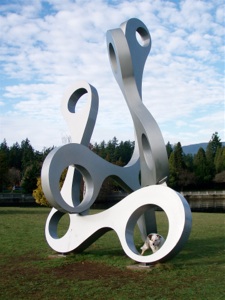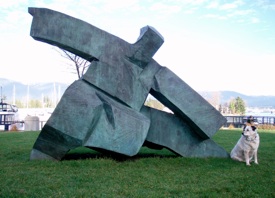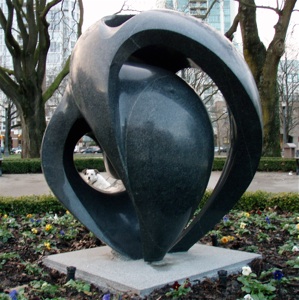organization and structure


organization
When we speak about the organization of a system we are concerned with the form of the relationships between the elements of that system. In particular we refer to the form of relations that specify the identity of the system. As long as the distinguished relationships are present, we can refer to the system as a member of that identity. A triangle is a triangle no matter what material, size, or colour it is.
The organization “triangle” is the relationship between three points. Points have no mass, and their relative positions are imaginary. The form of a triangle must be manifest as lines that connect those mass-less points. The connections between the points may be as insubstantial as imaginary, as minimal as lines on paper, or the edges of a piece of paper in the appropriate shape, or they may be as massive as a marble monolith with three vertices and three edges. Because we can only perceive a triangle that has been manifest, we usually think of tangible triangles when we want to consider the organization “triangle”.
structure
Unless it is instantiated, an organization is a
no-thing. A thing cannot exist as such without structure. When a thing is manifest, or instantiated, what we see is the structure. We touch it as a structure, it is tangible. Yet unless the parts are organized in a particular manner it is not that thing, it may be some other thing, or it may be just a collection of parts.
A structure that we recognize as a “thing” or an entity is the instantiation of an organization. Its the organization that tells us what the entity “is” - but without the parts it doesn’t exist as an entity.
why does this distinction matter?
When we regard a system, what we see is the instantiation of a network of relations that includes those relations that distinguish it as the identity we know it as. However, there can also be other relations that may be unknown to us, or even if seen by us, irrelevant to that particular identity. We are inclined to think of the system in terms of what we perceive and consider relevant to us at the time that we distinguish the system. What we most readily distinguish is the structure. Consequently when we want to conserve the system, we are tempted to conserve the structure. However, if what we are interested in is the form of the relations, then we should be conserving the organization - and this is generally “known” in the business world as “organizational design” or “organizational review”. This is difficult, because organization is in itself invisible. We only impute it from observing the structure.
It is indeed difficult to speak of organization at all without giving it a tangible description – in words or diagrams that represent the elements so one can see the connections. As long as those words and diagrams are taken to evoke the relations that are desired, then our conversations and activities can continue in a manner that is oriented by the form of the organization. As soon as the description is taken as a symbol of what is real (or is to be made real) then a conversion from thinking in terms of the organization to thinking in terms of the structure has begun. When the description of the organization is further articulated in the form of values, codes, policies, and rules, then the process of converting the description to a prescription of a particular structure continues. It is very difficult to act without turning an organization into “The Organization.” This is particularly so in our modern western culture wherein we are encultured to be strongly attached to a reality of objects and commodities.
“The components plus the relations between them that at any instant realize a particular system as a system of a particular class constitute its structure. The structure of a system includes both components and relations between them, and therefore has more dimensions than its organization that entails only relations. Since the organization of a system is the configuration of relations between its components that define its class identity, it follows both that the organization of a system is a subset of the relations that form part of the structure of the system and that an organization does not exist independently of the structure of the system in which it is realized. At the same time, it also follows that the components of a system do not exist by themselves as independent entities. So the components of a system are elements that become components of the system as they integrate and constitute its structure while participating in the relations of composition that realize it as a particular case of a particular class. If an element stops participating in the composition of a particular system, it stops being a component of that system and becomes either a free element or the component of another system. Components only exist participating in a composition.”
Origin of Humanness in the Biology of Love, page 164



multiple identities
The relationships relevant to determining whether something belongs to a particular class depends on the class one considers. I can look at the structure standing in front of me, and note that it manifests all the relationships relevant to the identity of “a living being”. This living being further manifests the relationships that define it as a member of the class “mammal” and a “human” and “scholar.” Furthermore, it manifests those particular internal and external relations that enable me to instantly recognize this being as my son Kalev. Indeed, I am hardly likely to think of those other identities. The specific identity “Kalev” is immediately relevant to me, in my relationships, even though I am aware that some of the other class identities that co-exist are necessary for the conservation of Kalev as a living human being.
Summary:
Organization is the set of relations
among a collection of elements
that determines it’s class identity.
Structure is an instantiation
of an organization as an entity,
with tangible elements.
Organization + Elements > Structure
identity conserved
Further to this, when an organization is manifest as an Organization, then people are put in place to represent nodes or elements of the organization. In this way, people become the means by which the organization is manifest as a structure. (Of course infrastructures are also part of the structural manifestation. )
This has an interesting dynamic in that the people begin to see their identity (their significance, meaning) in terms of their position as an element in the structure. When this happens, they begin to act in a manner that conserves the structure, not the organization.
People who identify with an Organization as a “thing” conserve that thing, rather than the underlying organization that has been manifest as the particular structure that they see. This makes the Organization rigid. Rigid structures are usually persistent as long as nothing changes, either in the context or in the components that are organized as that structure. This is rarely the case, consequently rigid structures are neither robust nor resilient.
For a moment I would like to return to the statement that the organization of a system determines the class identity of that system. As long as the class identity is conserved, the manifestation of a system may change in all other respects. However, we do not necessarily see which relations among the elements are relevant, so we do not always know which elements we can change without sacrificing the identity.
your identity
Your identity as yourself has been conserved even though you have changed from infant to child to adult. Over this period not only has your bodyhood changed, but also your behaviour . Your identity as a human being consists of your organization, your parts and the relations among those parts. However, your identity as yourself is discernible through your particular flow of thinking, doing, and being.
How do you know your identity?
What do you consider to be relevant to who you are?
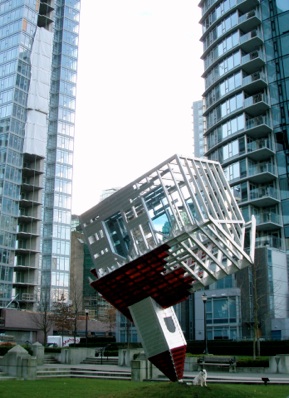
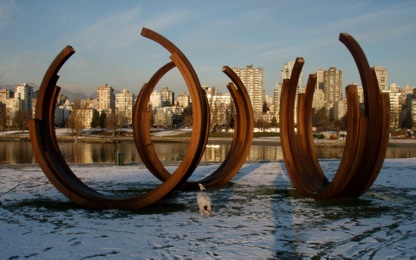
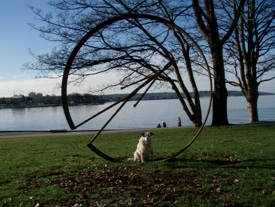
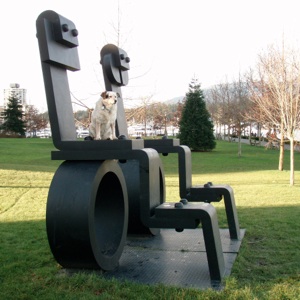
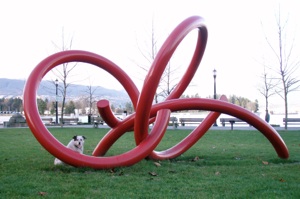
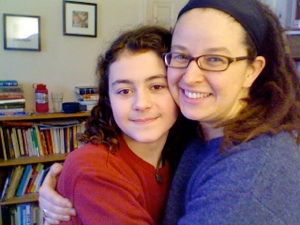

an entity named “table”
